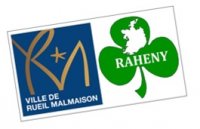
Échange avec l’Irlande - janvier 2018
Notre séjour à Dublin s’est inscrit dans une volonté d’échange pédagogique et culturel entre le lycée Richelieu de Rueil-Malmaison et le lycée Manor House School à Raheny (école privée de jeunes filles), en banlieue de Dublin.
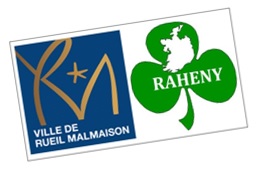
3 professeurs ont organisé un séjour de 8 jours et encadré une classe de 1re S euro anglais (au total 23 élèves) : Mme Loubet Del Bayle (professeur de DNL), Mme Menu (professeur d’anglais) et Mme Crespy-Wagner (professeur d’histoire-géographie).
Le programme à Dublin fut le suivant :
Les élèves irlandaises étaient en cours toute la journée (sauf mercredi après-midi).
Nos élèves avaient cours le matin, et partaient avec leurs professeurs en visite l’après-midi dans Dublin.
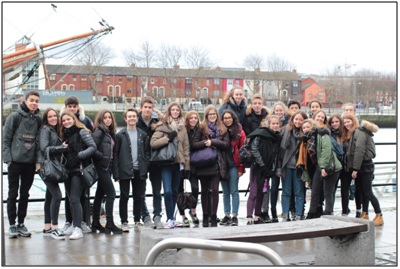
On board the Jeanie Johnston Ship
Samedi 13 janvier 2018 et dimanche 14 janvier 2018 : arrivée, programme organisé par la famille d’accueil.
Lundi 15 janvier : Jeanie Johnston Ship / Dublin Writers Museum
Mardi 16 janvier : Dublin Castle
Mercredi 17 janvier : Chester Beatty Library
Jeudi 18 janvier : Decorative Arts and History
Vendredi 19 janvier : fête à Manor House
Les élèves ont eu des visites guidées en anglais dans les lieux historiques et culturels, qui ont permis aux différents groupes d’élèves (constitués avant le départ) de travailler plus en profondeur des projets rattachés au séjour à Dublin.
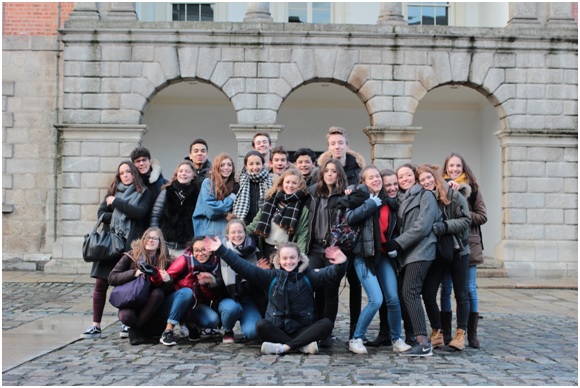
At the Decorative Arts and History Museum
Les projets ont pris la forme d’exposés oraux avec présentation Powerpoint ou Prezi, des compte-rendus écrits (type article de journal, interview, long message dans une bouteille, etc…). cf. exemple plus loin.
Les élèves irlandaises sont venues quelques semaines plus tard et ont suivi la même démarche (cours le matin au lycée Richelieu et visites l’après-midi).
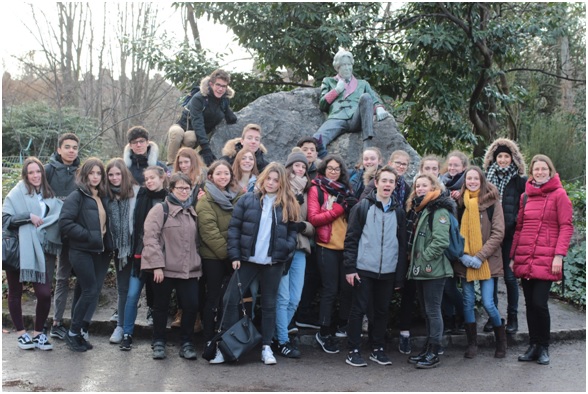
At the feet of Oscar Wilde…
Quelques retours de parents d’élèves français :
‘Nous tenions à vous faire part de notre entière satisfaction concernant l’échange organisé par les professeurs d’Anglais entre le lycée et l’Irlande. Ce fut pour ma fille, et pour les autres élèves je pense, une très belle expérience enrichissante à tous les niveaux : Elle a pu découvrir une autre culture, pratiquer l’anglais et faire de belles rencontres amicales.
Elles continuent de communiquer et prévoient même de se revoir cet été.
Je tenais donc à remercier le lycée et les professeurs organisateurs pour cet échange très positif.’
‘Nous tenions à remercier toute l’équipe pédagogique ainsi que la direction pour la mise en œuvre de cet échange.
Notre fille C. a été ravie de son séjour à Dublin.
Et bien que nous y ayons vécu deux ans il y a peu, elle a découvert de nouveaux quartiers, le musée des écrivains et surtout, elle a été baignée dans une ambiance familiale 100% irlandaise.
Espérant que d’autres élèves puissent à l’avenir partager aussi ce type de quotidien avec des anglo-saxons, hors du commun.’
‘Vous avez autorisé une classe de 1ère S à effectuer un échange avec un lycée irlandais à Dublin, sous la responsabilité de mesdames Z. Loubet del Bayle, L. Menu et V. Crespy-Wagner.
Je tenais à vous remercier pour cette expérience menée au sein de votre établissement.
Cette semaine à Dublin, puis cette deuxième semaine à Rueil Malmaison a été une expérience très enrichissante pour vos élèves et donc nos enfants.
Ils ont pu découvrir une autre façon de travailler et de vivre en partageant le quotidien d’un lycée et d’une famille. Ils ont également progressé en anglais, étant dans l’obligation d’utiliser cette langue pour discuter avec les irlandaises.’
‘Au final, ce type d’échange participe bien entendu à ce que chacun améliore une langue étrangère, mais aussi s’imprègne des usages et traditions d’un autre pays.
Ce dernier point permettant largement à nos enfants de découvrir le monde, d’aller à la découverte des autres, mais aussi d’acquérir leur autonomie de futur citoyen…’
‘Notre fille est revenue ravie de Dublin et a eu beaucoup de plaisir à recevoir sa correspondante la semaine dernière.
C’est une belle manière de découvrir une autre culture et une autre manière de vivre.’
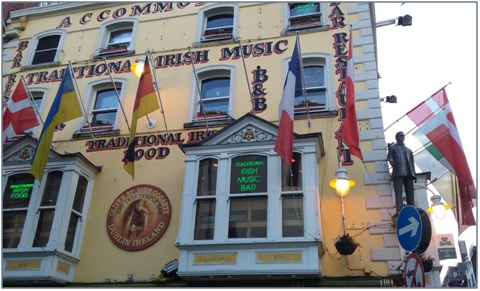
Exemples de projets en groupes sur les visites faites à Dublin :
supports et présentations libres (choix des élèves) Ici une présentation orale (avec prezi en appui) faite par Axelle, Chloé, Dina, Jade, Lilia :
The Chester Beatty Library in Dublin
https://prezi.com/view/BgN1W8luNo8z...
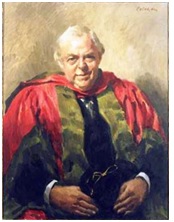
Alfred Chester Beatty, born in New York on February 7th, 1875 and died on January 19th, 1968 in Monaco, was an American mining magnate, philanthropist and a successful businessman. Sir Alfred Chester Beatty was also a collector of African, Asian, European and Middle Eastern manuscripts, rare printed books, prints and objects of art.
He graduated as a mining engineer from Colombia University and left for Denver, Colorado to work in mines. He built his international reputation by establishing a successful mining consultancy in New York city in 1908.
In 1900, he married Grace Rickard and had two children with her. In 1911, she died of typhoid fever. Beatty being ill himself, left the world of mining in the US and founded a new consultancy in London. There, he married Edith Dunn. Both avid collectors, the two spent the next few decades travelling the globe and acquiring masterpieces for their unique collections.
Throughout the years, he collected minerals, Chinese snuff bottles, European and Persian manuscripts. He became interested in decorative copies of the Qur’an during his trip to Egypt with his wife and Japanese and Chinese paintings after a trip to Asia in 1917. His aim was to conserve them because of their historic value. His eye was drawn to richly illustrated material, fine bindings and beautiful calligraphy.
During World War II, Chester Beatty gave many supplies of raw materials to the Allies, which got him to be knighted. In 1950, he moved to Ireland and bought a library for his art collection, which opened in 1954. This library is now known as Chester Beatty Library and is supported by the Government of Ireland. In 1957, he became Ireland’s first honorary citizen.
Alfred Chester Beatty spent the end of his life between Dublin and the south of France, continuing his collection. He died in Monte Carlo, Monaco, in 1968 and received a state funeral by the Irish government.
The Western Collection :
The Western Collection includes examples of European manuscripts, important for their texts, ornamentation (although not all are illuminated), and bindings.
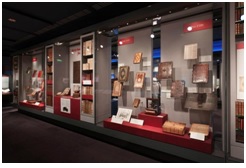
Throughout the eighteenth and nineteenth centuries, a print cabinet was an essential element of a gentleman’s library. He started to collect prints around 1910 and he was particularly interested in the works of Northern European artists. Beatty’s collection grew to over 26,000 prints, approximately 4,000 of which are individual sheets with the remainder mounted in albums. The collection of drawings is relatively small today as we saw, because Chester Beatty donated most of this collection to the National Gallery of Ireland.
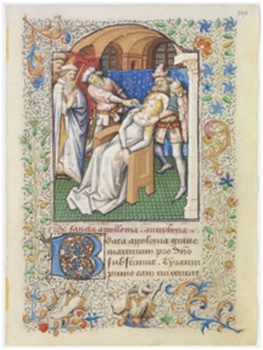
The Egyptian Collection :

The Chester Beatty Library owns a collection of Ancient Egyptian papyrus manuscripts collected by Alfred Chester Beatty. Indeed, between the two world wars, Beatty wintered in Egypt where he bought the principal papyri of his collection from merchants based in Cairo. Moreover, he had a real passion for Egyptian papyri and is now considered as « a British Egyptologist ».
However, the collection of Ancient Egyptian papyrus manuscripts exhibited is relatively modest compared to the other collections of the Library because Alfred Beatty donated a large number of Ancient Egyptian papyri to the British Museum and to one of his friends, the collector Wilfred Merton.
The Library’s collection of Egyptian papyrus manuscripts is mainly composed of commercial and funerary texts from the Roman period, circa 1800 BC. But the Library is particularly known for a famous manuscript, the unique roll containing the Love Poems and other texts from the ancient Egyptian city of Deir el-Medina.
The Egyptian collection also owns several books of the Dead, from the same era. Unfortunately, most of them are in a fragmentary state, except the one of Lady Neskhons dating from 300 BC.

Besides, throughout the visit of the Library, we observed that an important part of the Egyptian manuscripts is written in Greek, which was for more than 1000 years the official language of Egypt.
But of course, the Library owns many manuscripts written in hieroglyphic, hieratic, demotic and coptic (all ancient types of Egyptian scriptures) such as The Book of Breathings, as shown below.
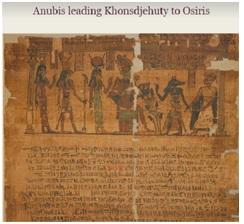
The Middle East Collection :
During our visit we could admire many different objects.
This is an astrolabe from Isfahan in Iran during the middle of the 18th century. It was used to solve various astronomical problems but also for religious functions like calculating the prayers time. It was really useful for Muslims’ daily life, with this object they could find the Qibla (the direction to pray) or to locate the month of Ramadan.
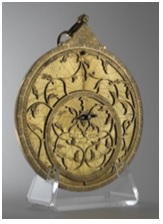
This folio is a page of a manuscript, that you can find just after the front first page, was made by Mir Ali one of the greatest masters of Islamic calligraphy between 1505 and 1545 maybe in Iran. You can see the calligraphic scrip, the illuminations surrounding the script and the borders. During the 17th century the work travelled in India were vegetal motifs on gold background were added.
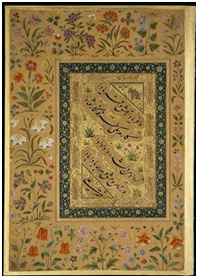
If you remember we could hear the famous call to prayer.
The Islamic collections are among the most beautiful in the world. The manuscripts that comprise the collections range in date from the eighth century to the early years of the twentieth century. They derive mainly but not only from the Arab world, Iran, Turkey and India. They include documents of Islamic art and culture. Some of the 2650 manuscripts of the Arab collection were exposed. Many of which were unique by their illustrations and preserved only in Chester Beatty Library. They embrace a vast range of topics like religion, history, geography, medicine or astronomy.
The most important exhibition in the Islamic collection was which one of Qur’ans. The gem of the collection is the splendid Qur’an copied in Baghdad in the year 1001 by Ibn al-Bawwab, one of the three greatest medieval Islamic calligraphers.
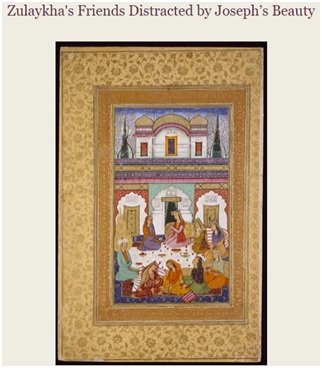
The Asian Collection :
The Chester Beatty Library has also an East Asian collection. This collection shows a lot of Buddhist texts and rituals objects, but there are also sixty-seven thangkas. A thangka is a painting, a drawing or a paint textile which characterizes the Tibetan Buddhist’s culture. This work of art generally represents religious characters, “bhavacakra” (the wheel of karmic life) or mandalas. For example, the ’Great Illusion’ is a mandala which represents the universe and is used during the meditation or the rituals. On the centre of this work, we can see a religious character considered as the creator in the Tibetan Buddhism.
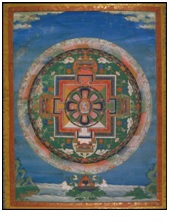
You can also find gravures such as a jade book composed by 53 tablets engraved with the Buddhist history. Jade was generally used for religious subjects because the population thought that it had magical properties. On one of these jade tablets, we can see Buddha surrounded by followers and guardians.
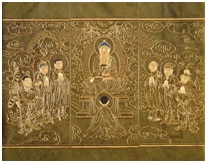
Buddhists use different materials to represent Buddha. We can see jade, but they engrave another rare material which is ivory. For example, this tie of a manuscript represents Buddha on his deathbed.

To conclude, the Chester Beatty Library has a lot of representation of Buddha, but one of the most notable is a sculpture called “Standing Buddha”.
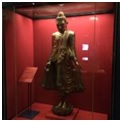
Now, we are going to talk about the Indian culture. The Indian books talk about different subjects such as the emperors, the celebrations or the religious characters. The collection contains painting produced under the guidance of the emperors such as Kamrup. In fact, in the Library, you can notice a painting representing the birth of Prince Kamrup. At the top of the scene, the prince is representing as a baby in his mother’s arm and at the bottom, there is the celebration of the birth with dancers and musicians.

Then, this folio shows the Hindu festival of Holi. It is extracted from an album for the emperors Jahangir and Shan Jahan. The emperor wanted to describe Holi which is Thursday, the last day of the year in their belief. This folio represents the custom of Holi.
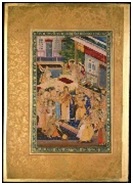
In conclusion, the Indian manuscripts tell also the religious story. For example, on this drawing, we can recognize the blue god Krishna which is characterized by his flute and the cows.
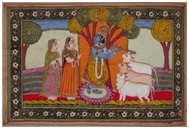
The Chinese Collection :
The decorative arts of China date mostly from the Qing dynasty (1644-1911) and include almost 950 snuff bottles of all kinds, a rare group of seventeen jade books, most of them made for the Qing Qianlong Emperor (r. 1736-95) and textiles and robes including seven dragon robes.
Snuff bottles were used by the Chinese, Mongolians during the Qing Dynasty to contain powdered tobacco. Smoking tobacco was illegal during the Qing Dynasty, but the use of snuff was allowed because the Chinese considered snuff to be a remedy for common illnesses such as colds, headaches and stomach disorders. Therefore, snuff was carried in a small bottle like other medicines. The snuff bottle replaced the snuff box used by Europeans.
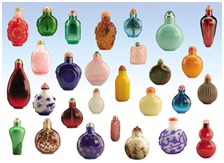
In China, jade was the symbol of power and prosperity and was used during funerals to protect the body from putrefaction. The Qing Qianlong Emperor liked a lot of ancient things so jade became very popular during his reign. His jade books are considered singular examples within Chinese art history.
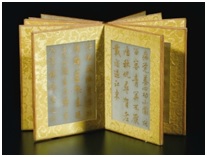
The dragon robes were reserved to the head of the society. The emperor was the only person allowed to wear a dragon robe with nine dragons, each with five claws. The dragon robes symbolized the authority.
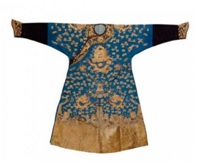
The Japanese Collection :
In Chester Beatty Library, the decorative arts from Japan are mostly dated to the Edo period (between 1600 and 1868).
There are many different categories of exhibited objects such as weapons, Emakimono and Mokuhanga.
In the Library, you could see objects that are part of the traditional kimono such as netsuke, used to hold the sagemono, suspended from the kimono, and the inrō, a box part of the sagemono. There are also parts of weapons such as the katana with its tsuba, the part of the katana that protects the hand from the blade and helps with balance.
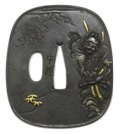
There were many prints displayed in the Library, most of them being emakimono, or picture scrolls. They are horizontal illustrated narrative form combining text and pictures created during the 11th century. They can be drawn, painted or stamped on a handscroll. Emakimono can be used for different occasions, such as New Year, and are then called surimono.
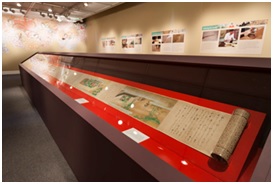
To make those emakimono, a technique called mokuhanga is used. It was used during the Ukiyo-e movement, which is a Japanese movement from the Edo period.
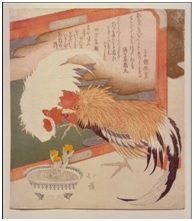
Travail en binôme autour des auteurs irlandais : présentation orale avec Power Point, après avoir visité le Dublin Writers Museum (Dublin, Ireland)
Voici le script d’une des présentations, par Dina et Axelle :
Anne Enright is an Irish author born in Dublin in 1962. She studied both English and Philosophy at Trinity College, Dublin. She also has a Master of Arts in Creative Writing.
She used to work as a television producer for the Irish channel RTE. At the same time, she wrote short stories which have been published in several magazines including foreign ones (The New Yorker, The Paris Review). She also wrote many books such as The Portable Virgin (1991), her first one, The wig my father wore (1995) or The Green Road (2015) but the book that made her famous was The Gathering, published in 2007. In fact, with this book, she won the Man Booker Price in 2007 and the Irish Novel of the year in 2008. The Gathering tells the story of the Hegarty family. One of the nine children committed suicide which reconsidered the relationships between the family and especially for Veronica, Liam’s sister, who thought she knew him.
In most of her work, Anne Enright writes about the daily life of Irish families and offers her view on family relationships, love, sex, repression and Catholicism. Her writing style is composed of honesty and humor.
As a woman, Anne Enright decided with other women writers to boycott gender biased books written by men. After 2017’s Cambridge Companion to Irish Poets included only four women, 250 writers have agreed to boycott anthologies, conferences and festivals where women are not fairly represented. Enright compared the situation to the #MeToo movement and said that no one was willing to stand up and be counted over gender bias. This whole situation is about women’s liberty to achieve greater positions but most importantly women’s liberty of speech and to assist to conferences where they are represented as equally as men. “Prejudice against women is a universal crime with zero perpetrators. Irish men are lovely, Irish poets are especially lovely – what on earth could be the problem ? There is an amazing series of defences between men and this conversation,” she said. With this example of discrimination and crime she tries to explain that “when there is no physical content like rape or other, when it’s about aversion, when it’s about exclusion, it is extremely hard to identify and denounce.”
Extract from The Gathering, feelings of a daughter :
« Some days I don’t remember my mother. I look at her photograph and she escapes me. Or I see her on a Sunday, after lunch, and we spend a pleasant afternoon, and when I leave I find she has run through me like water. “Goodbye,” she says, already fading.
“Goodbye my darling girl,” and she reaches her soft old face up, for a kiss. It still puts me in such a rage. The way, when I turn away, she seems to disappear, and when I look, I see only the edges.
I think I would pass her in the street, if she ever bought a different coat. If my mother committed a crime there would be no witnesses – she is forgetfulness itself. “Where’s my purse ?” she used to say when we were children – or it might be her keys, or her glasses. "Did anyone see my purse ?" becoming, for those few seconds, nearly there, as she went from hall, to sitting room, to kitchen and back again. »
We chose to talk to you about Anne Enright for many reasons. First, she is an author who is alive right now which means that her books are more likely to touch us. We also wanted to present a woman because most of the authors on the list were men and we were curious to know why she was famous in Ireland. Finally, the subjects this author writes about are diverse and intrigued us.
